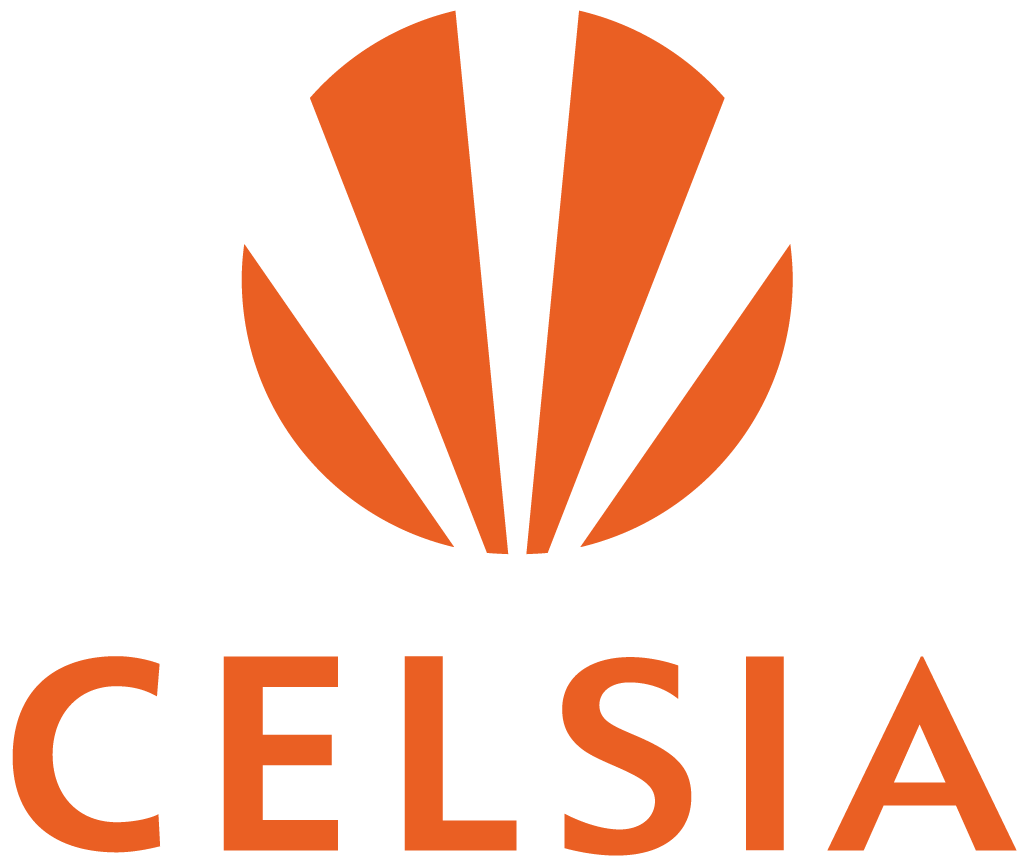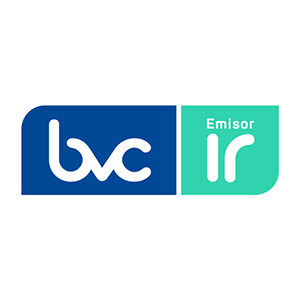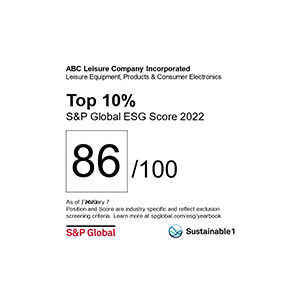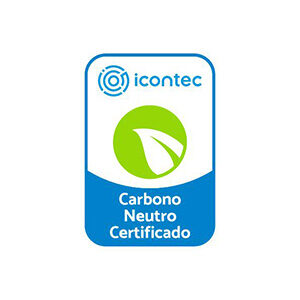Climate change is one of our greatest challenges as an Organization, which is why we commit to mitigation and compensation measures.
GRI (3-3) Climate change is one of the main strategic challenges we are currently facing and, as the Grupo Argos Energy Company, we are committed to reducing our impact, designing effective mitigation measures and compensation and innovative initiatives that help strengthen their adaptability and develop business opportunities. In line with this, we established the goal of becoming carbon neutral, by bringing our carbon footprint to zero.
The Company’s Strategy is to obtain returns for our Shareholders and Investors, with sustainability criteria and, together with our Stakeholders, grow harmoniously and, thus, build a better society that ensures the generation of long-term environmental, social and economic value.
We work on the externalities derived from climate change for the business, the physical and emerging risks present in the territories in which we operate and their possible impact. Thus, we formulated Celsia’s Climate Strategy, which includes mitigation, compensation and adaptation actions.
Our Management
Mitigation:
- Efficiency actions in operations;
- Energy efficiency;
- Use of conventional (hydroelectric) or unconventional (solar and wind) renewable sources:
- Reduction in the consumption of fossil fuels, due to the closure of the steam technology of the Bahía Las Minas Thermal Power Plant.
- Loss reduction in the Transmission and Distribution System for Valle and Tolima.
Adaptation:
- Installation of a Hydro-Climatological Monitoring System.
- Identification of risks and definition of Business Continuity Plans to implement solutions based on ecosystems, infrastructure or technology.
- Evaluation of assets and investments to minimize disruptions in operations and economic losses for the Company.
Compensation:
- The compensation of emissions is made from the use of Certificates of Reduction and Avoided Emissions, which are generated by clean-energy projects (hydraulic, solar and wind), to continue with our commitment to be carbon neutral.
Communications:
- In terms of communications and awareness, a plan will be put forward to create awareness in all Stakeholders, communicating the management and results in this matter through internal and external channels.
GRI (3-3) Task Force on Climate-related Financial Disclosures (TCFD): Governance – b. At Celsia, we have an Environmental Policy, which incorporates commitments related to the management of climate change and other atmospheric emissions, among which we highlight:
- Offering a portfolio of low-carbon products and services;
- Improving the operational efficiency of the assets in order to manage and control noise and other atmospheric emissions;
- Measuring greenhouse gas (GHG) emissions from operations and implementiong the necessary measures to reduce emission intensity;
- Incorporating Climate-Change and Emission Management variables in the Feasibility Analysis of new investments and projects.
- Implementing projects for the ecological restoration of watersheds, within compliance with environmental obligations and voluntary projects such as ReverdeC.
- Reducing by 25% the intensity of GHG emissions associated with power generation by 2025 (base year 2015) and declaring ourselves carbon neutral, with a base year of 2021.
- We integrated the TCFD Framework into our management of risks and opportunities related to climate change.
Impact of Climate Change
GRI (3-3) TCFD: Strategy – b. We constantly identify how climate change impacts us on different fronts. This, in order to have the information and complete panorama to manage mitigation, adaptation and compensation initiatives, which lead us to fulfill our environmental goals.
Click on the icons for more information on each impact.
Financial Impact
We take into account the characteristics of the ecosystems in which we operate, the circumstantial and structural changes of natural phenomena and their short-, medium- and long-term projections.
The foregoing results in the constant activation of an evaluation and monitoring of the financial impact of the risks associated with climate change to adopt the necessary measures and, thus, guarantee the stability and continuity of our Businesses or – failing that – review the sSrategy and undertake plans to transform them.
Regulatory Impact
Being aware that climate change has led international institutions and governments to set ambitious targets for the decarbonization of the economy, after the signing of the Paris agreement, Colombia promised to reduce GHG emissions by 51% by 2030 and be carbon neutral by 2050.
This has generated major regulatory changes in the energy sector within the framework of the Energy Transition Policy, such as taxes on fossil fuels, incentives for renewable energies, decarbonization of the economy and greater barriers in environmental matters.
We highlight the challenges generated by Colombia’s Climate-Change Strategy, in addition to the new opportunities in the development of unconventional renewable energy generation, which is part of Celsia’s Strategy, as well as the use of hydrogen as an energy vector and industrial input. In addition, we have identified great potential to grow in electric mobility and energy efficiency for homes, industries and cities.
Impact on the Supply Chain
- National and international transportation continues to be impacted; this represented an opportunity to reduce imports of materials and encourage the development of local commerce, which represented a reduction in our carbon footprint.
- Climate change and global dynamics have caused Celsia to increase demands on its suppliers, by generating trends for their selection through sustainable purchases.
- Identification of critical suppliers in environmental matters in the supply chain, with which management will be carried out on environmental, social and governance (ESG) issues (climate change and carbon footprint), to reduce the contributions of CO2 in our operations and have a greater vision regarding the climate risk.
Impact on Management and Client Experience
Climate change and global dynamics have made Celsia’s demands on its suppliers more stringent, bearing in mind, environmental, social and Corporate-Governance (ESG) criteria.
The contribution made to climate-change mitigation in Celsia, from the supply chain, consists of measuring the carbon footprint to find strategies that allow us to implement actions that can directly contribute to its reduction.
Impact on Innovation
At Celsia, we focus on innovative initiatives to reduce climate change, such as the reduction of greenhouse gas (GHG) emissions. Products based on Unconventional Renewable-Energy Sources (FNCER, in Spanish) are a reflection of this, being an idea that was born from the search for innovation, to the evolution of a massifiable product.
Currently energy-storage initiatives, solar energy, hydrogen, microgrids, energy efficiency, among others, position us as one of the leading companies in the search for new business-development opportunities that allow clean technologies to permeate sectors related to electricity (educational centers, universities, government institutions, technology and service providers, energy companies, research centers).
In conclusion, the challenge of climate change motivates us to find new solutions in which innovation works closely to bring them to reality and generate new market and regulatory conditions.
GHG Emissions
Direct and Indirect GHG Emissions
Our Zero-Emissions Target
Scope of the TargetScope 1 and 2
Target ValidationAlthough the goal is not validated by the Science Based Target Initiative (SBTi), we consider that it has a scientific basis, since it is aligned with the Nationally Determined Contributions (NDC) of Colombia.
GHG Emissions Avoided
Emission Intensity and Target
Base Year Emission Intensity
Emission-Intensity Target
At Celsia, we actively contribute to the fight against climate change; for this reason, we have an Emission-Intensity Target at the Corporate Level:
SASB (IF-EU-110a.3) No recalculation of the information has been presented in our Emission-Reduction Target.
To achieve the Target, the Organization’s Growth Strategy is primarily based on the diversification of the Generation Matrix with renewable sources, disinvesting in assets with high levels of GHG emissions and prioritizing efficient projects, products and services with a positive impact in terms of climate change. This transformation is transversal to all the territories where we operate and is aligned with international standards to reduce emissions throughout the Organization’s Value Chain.
Risks or limiting factors that may affect the achievement of Celsia’s Emission-Reduction Targets:
- Regulatory changes that do not facilitate the development of low-emission technologies and affect the financial models of the projects;
- Extreme climatic-variability phenomena that affect the resources we use;
- Failure to obtain environmental licenses for wind and solar projects; and
- Limited access to economic or financial resources to develop projects.
therefore, it does not respond to any regulation that limits our emissions with the technologies we currently have.
in line with its Sustainability Model. In addition, we recently adhered to local initiatives, such as carbon neutrality in the Colombian electricity sector.
Scope 3 Emissions
-
Source 1:
Activities Related to Fuel and Energy
(not included in Scope 1 or 2). -
Source 2:
Waste Generated in Operations -
Source 3:
Business Trips
Celsia has a reliable information management system to collect and extract data, with which it can monitor the performance of emissions in this category.
Activities Related to Fuel and Energy
(not included in Scope 1 or 2).
Source 1
Relevance of the Source for Celsia
Fuel and energy-related activities: incorporate GHG emissions from the Value Chain and from transportation and distribution, both from electrical energy imported from the grid and from the extraction and production of fuels used in the Organization’s operation. The fuels included are: Diesel – ACPM, gasoline, natural gas, LPG – propane gas, and fuel oil – Bunker.Equivalent Emitted
Waste Generated in Operations
Source 2
Relevance of the Source for Celsia
Waste management is incorporated into the GHG emissions derived from the management of waste generated in the different Company facilities in Colombia and Central America. Emissions derived from the transport of this waste to its disposal site were also included, according to the types of disposal defined in the Organization (landfill, dump, incineration and security cell).Equivalent Emitted
Business Trips
Source 3
Relevance of the Source for Celsia
Corporate Trips: GHG emissions derived from business trips made by the staff of the administrative headquarters of Medellín and Yumbo are incorporated. These trips are made by air and have been classified into three (3) subcategories:- Corporate Air Travel (managed by a third party)
- Domestic Air Travel
- International Air Travel
Equivalent Emitted
Methodology to Calculate Scope 3 Emissions
- By means of a new technological tool implemented in Celsia – called Environmental Variables – the necessary information was collected to calculate the footprint. Celsia’s Social and Environmental Management (SEM) Team was in charge of reviewing and verifying the information and monitoring the calculation of the carbon footprint for 2022.
- The consistency of the reported data was reviewed and the calculation of the carbon footprint was developed, taking into account the guidelines of the methodology, the Greenhouse Gas Protocol (World Business Council for Sustainable Development, WBCSD) and the Intergovernmental Panel on Climate Change (IPCC) Guide to prepare national GHG inventories.
Internal Price of Carbon
TCFD: Metrics and Objectives – a. Thanks to the development of strategies aimed at the growth of renewable energies and actions to reduce their greenhouse gas (GHG) emissions, Celsia adjusted its operation to be more efficient; we restored watersheds and led the planting and care of millions of native trees in different Departments of Colombia. We are one of the first companies in the sector to be carbon neutral; that is, Celsia reduced its CO2 emissions and we offset those that we cannot stop emitting, which is a relevant contribution to climate-change mitigation.
We emphasize the reduction of CO2 emissions, an achievement that is closely related to the promotion of renewable energies, energy-efficiency programs and the ReverdeC Ecological-Restoration Program, with which we reached 12,000,000 trees planted and cared for.
Risks and Opportunities in the face of Climate Change
Scenario Analysis
TCFD: Risk Management – a. TCFD: Strategy – c. At Celsia, we use quantitative- and qualitative-scenario analysis to identify physical and transition risks in relation to climate, for business planning, based on different methodologies:
Physical Climate-Risk Scenarios:
- CPR 2.6.
- CPR 4.5.
- CPR 6.
- CPR 8.5.
- Other climatic-risk scenarios used for the probability and impact of physical risk were made through the Catastrophic (CAT) Risk Modeling carried out by Marsh (RMS RiskLink and AIR Touchstone Computational Model) and by SURA (GeoSura Tool), in which natural threats are analyzed, the Probable Maximum Loss (PML) is established, and the risk transfer is carried out through the insurance program that covers material damage, loss of benefit and the current and future reliability charge that the insured goods suffer due to a sudden, unforeseen event of nature.
Transition Climate-Risk Scenarios:
- Nationally Determined Contributions (NDC).
- To measure Transition Risk, the Company uses a stochastic model known as Monte Carlo Modeling to calculate the Value at Risk (VaR). Risk analysis using this model consists of substituting variables that have an uncertainty associated with a single or specific values by a range of values or probability distributions. What it then does is calculate the results many times, each time using a different set of values from those initial probability distributions. Likewise, the result will not be a unique value, but will produce distributions of values of the possible results. To complement our model, in 2022, and with the support of AON and The Climate Service,we carried out a Transition Risk-Quantification Study on the Climanomics Platform, with a methodology fully aligned with TCFD, which uses the price of carbon, legal and regulatory issues, technology, the market and reputation as variables.
The Transition-Risk Assessment is based on possible scenarios of legislation, technological development or market conditions and is consistent with the expected useful life of the assets or activities.
Colombia’s goal
Is to reduce GHG emissions by 51% by 2030. The Ministry of Mines and Energy defined four strategic lines for the sector:
- electricity generation (unconventional sources)
- energy efficiency (increased thermal efficiency)
- fugitive emissions (oil)
Costa Rica
Committed to being carbon neutral by 2021, by reducing GHG emissions by 30% and generating 100% renewable energy.
Panama
Intends to increase renewable energy to 30% in its Electrical Matrix. Considering these lines of intervention, Celsia has defined its growth strategy with low-carbon emissions, prioritizing the generation of wind, solar and hydroelectric energy.
To prioritize risks related to climate change and determine their importance within Celsia:
The Climanomics Platform
Identified the natural threats related to climate change, which impact our operations and assets (generation plants, electrical substations, transmission and distribution lines and networks) and through scenarios based on IPCC’s Representative Concentration Pathways (RCPs), we projected our level of exposure.
With the Monte Carlo Model
We identify variations in financial indicators, such as EBITDA, due to changes in the main variables affected by climate change. These could be modified by the weather, such as water contributions, solar and wind resources, Share prices, short-, medium- and long-term regulation, taxes on emissions and changes in the market and commercial aspects
For Climate-Risk Assessment, the scope includes:
- Our operations;
- Our own operations in the initial phase; and
- Our downstream operations and clients.
Risks and Opportunities
GRI (201-2) TCFD: Strategy – a. and c. Risk Management – a. SASB: IF-EU-110a.3 We identified current and potential risks, driven by regulatory, physical, and financial factors related to climate change, that may cause a substantial other direction to our strategy, business operations, revenues, and expenses.
Regulatory Risk
In 2023, the National Development Plan of Colombia will be defined, which establishes the Government’s navigation chart for the next four years. Within the Climate-Change Strategy, this includes the implementation of a system of tradable-emission quotas, where a risk would be the application of a maximum-emission quota for natural-gas generation.
Additionally, in the tax reform, which was approved in November 2022, it was stipulated that the electrical-energy generation, through water resources, must pay three additional and complementary points to the income tax during the taxable periods between 2023-2026, with the total rate being 38%, which could lead to a significant reduction in investments in projects from this source.
Physical Risk
The main physical risks that Celsia faces are:
Dry seasons;
Floods;
Sedimentation of the reservoirs; and
Erosion of the terrestrial layer.
These risks are managed through the application of evaluation strategies for water sources, reforestation activities, which through the ReverdeC Program currently planted and cares for 12,000,000 trees, the efficient use of water, the calculation of the water and carbon footprint and control of sedimentation in reservoirs. Additionally, the development and construction of renewable-generation projects in the coming years and the integration of low-emission products and services into the Portfolio allow mitigating these effects. For the economic quantification of these risks, methodologies are implemented that include expert advice and financial modeling of the Value at Risk (VaR).
TCFD: Risk Management – b. These risks are managed through our mitigation and adaptation actions. Currently, physical risk is transferred through the insurance program that covers material damage, loss of profit and the current and future reliability charge, suffered by our insured assets due to a sudden, unforeseen event of nature. Likewise, we have Business-Continuity Plans and Disaster Risk-Management Plans (DRMPs) for each of our assets.
Financial Risks and Opportunities
GRI (201-2) TCFD: Strategy – a and c. The Company uses financial models and the Scenario-Planning Methodology to propose short-, medium- and long-term strategies that maximize Shareholder value while limiting risk, within the desired values.
These models mainly calculate EBITDA, Return on Invested Capital (ROIC), Return on Capital Employed (ROCE) and Free Cash Flow under scenarios that contemplate changes in commercial policy, price variations and quantities in the different energy-sales channels. These also consider the country’s hydrological cycles and extreme weather events, such as El Niño and La Niña, which may positively or negatively affect the expected results.
In renewable- and environmentally friendly energy projects, we see great financial opportunities: the use of tax benefits such as: Law 1715/14, in Colombia, and Law 45/2004, in Panama. They highlight the financing conditions that guarantee us and the efficiency of the demand based on the change in consumer behavior and energy efficiency.
In 2022, a revolving credit for up to USD 140 Million was signed with International Finance Corporation (IFV), a member of the World Bank Group. This line of credit is primarily linked to the reduction in the intensity of CO2 emissions and, hand in hand with this, the possible sale of carbon credits is considered.
In order to mitigate the effects of climate change and take advantage of the opportunities that can be generated from it, we consider some relevant issues to work on in the short, medium and long term:
- Tax Benefits;
- Carbon Markets;
- Sustainable Credits;
- Tradable Quota Market;
- Carbon Tax;
- Carbon Neutrality;
- Net Zero;
- Generation from Hydrogen and Other Alternative Sources; and
- Renewable-Energy Certificates of Origin.
TCFD: Strategy – b. Climate change and its respective opportunities have different impacts on financial planning in different areas:
Access to Capital:
It becomes increasingly viable thanks to the development of renewable projects, adequate financial planning, risk analysis and climate impact, which generates confidence in Investors, since – thanks to this – they have a positive perception of the Company and invest considering a lower risk- Therefore, access to capital allows us to make investments that generate value creation for the Company, growth, stability and clean energy for the country, through strategic alliances, such as the creation of Investment Platforms.
Acquisitions or Sales:
Through the financial planning that is carried out on infrastructure projects, we emphasize the capital used, while ensuring profitability to the Investor for the capital injected, in order to guarantee the Company’s growth. For this, modernity, innovation, sustainability, productivity and reliability of the acquisitions are evaluated, with the main objective of improving profitability, maximizing results, continuing the Company’s growth and stability, which has been maintained primarily thanks to investments in renewable projects.
Capital Expenditures and Capital Allocation:
In investments, we always carry out proper financial planning from two main focuses: maximizing value creation and reducing the country’s environmental risks and impacts; therefore, we take into account renewable, innovative and environmentally friendly projects, among which we can consider some, such as energy efficiency, solar energy, electric mobility, energy optimization, generation assets and growth of the distribution business, with which we contribute to the Clean-Energy Matrix for the country, while generating excellent results for Stakeholders.
Operating Costs and Income:
We work on the simplification and automation of processes with the aim of maintaining the savings achieved during the pandemic, focused on their cost control and efficient management. This allows us to generate value with profitable-, sustainable-economic results; simplification and automation ensures the Company’s productivity, continuity and growth. Together in the financial planning for each of the stages, the Organization’s Strategy and short-, medium- and long-term objectives are detailed with which the results of all Stakeholders have been improved.
Energy-Resource Management
The most-important component of Celsia’s Ecosystem is water resources, the fundamental basis for the sustainable development of our planet and primary input for electrical –
This is how the protection and conservation of water resources – through the placement of unconventional technology in which there is a large-scale use of the wind and solar potential of the territories and the use of low-emission fuels – project a new horizon for Celsia, taking care of every detail, evaluating the possible impacts on water resources, climate change and other natural resources, as well as the risks involved in the development of our operations.
Water Consumption
- We designed the inlet valves for units 1 and 2 of the Bajo Anchicayá Hydroelectric Power Plant, within the framework of technological updating and operational excellence.
- We formulated the new Environmental Goals with a focus on the water component with a 2020-2030 horizon, for approval in the First Quarter of 2023 by the Celsia Steering Committee.
- In Central America, water consumption was reduced by 17% compared to 2021, thanks to good saving practices and efficient use of the resource.
Water Risks
Quantity and Quality Risks
GRI (303-1) SASB (IF-EU-140a.3 In 2022, our Environmental Policy was updated and new action guidelines were established regarding the management of water resources, which ensure continuous improvement within the framework of the Management System, in addition to legal compliance through innovative-conservation actions and efficient use of natural resources. It also contemplates the comprehensive management of environmental impacts and due diligence throughout the Value Chain with the participation of our Stakeholders, striving for the Organization’s permanence over time. Likewise, our Environmental Policy seeks to promote alliances to implement projects and actions in favor of the management and efficient use of water and the management of discharges.
Our programs to reduce water consumption and make efficient use of water resources:
- Projects to change valves and update technologies to control losses in conduction systems and hydropower generation;
- Use of rainwater in the Organization’s administrative buildings;
- Restoration and protection of watersheds; and
- Installation of high-precision flow measurement equipment to obtain water balances.
Scenario Analysis:
Through the development and maintenance of the Hydrometeorological Network, we verify the potential risks associated with the operation of the generation plants and their surroundings, in scenarios such as floods, droughts, landslides and other natural disasters. We use meteorological data to predict the water flow and availability in reservoirs, and to plan the operation of hydroelectric plants, elements that are complemented by climate-modeling tools to assess the impact of climate change on water availability and on the performance of hydroelectric power plants. Within the analysis to identify potential impacts on operations, we include a review of the quality of the water used for power generation, the amount of sediments, nutrients, pollutants, and other elements that may affect the characteristics of the resource.
Mechanisms to estimate changes in water availability at the local level:
- We have the Water Atlas Risk tool to identify monthly variations in water availability in the areas where the operating assets are located and, thus, predict significant changes in the amount of water.
- Expansion and maintenance of the Meteorological Network implemented since 2020. In 2022, we continued monitoring meteorological variables and expanded the monitoring of aspects related to the quality of the resource, such as the measurement of reduced channels (ecological flows) and sediments in some of our generation plants. We installed seven new stations.
Through tools – such as Global Water Tools and the Water Risk Atlas – the Company identifies sites that are in areas of water stress and monitors the availability of water in the basins where our facilities are located. To monitor and track local water availability, we established Consumption Indicators that make it possible to determine the demand for each site, design programs to reduce water resources, and formulate new strategies to promote the efficient, rational use of resources in our operating assets. We use the Siemens Supervisory Control and Data Acquisition (SCADA) Spectrum software to measure the levels of the water reservoirs in real time and calculate their volumes, which are monitored at our Advanced Vision Operations Center (NOVA).
Conflict Risk
GRI (303-1) SASB (IF-EU-140a.3) Celsia establishes contacts with its Stakeholders, which allows us to monitor not only possible conflicts but also possible opportunities to support and promote their initiatives.
We participate in local Water-Resource Management Boards in the areas of influence of projects under construction and assets in operation; we develop actions to protect watersheds through participatory ecological-restoration methodologies that involve local communities, institutions and community-based organizations in activity planning and execution. In addition, we carry out prior consultation processes with Ethnic Communities, as well as permanent information and communication events with Stakeholders in the territory.
On the other hand, the interventions of the ReverdeC Program are carried out in coordination with and the endorsement of the environmental authorities of each region, thus prioritizing the sites with the greatest need for improvement of forest cover and potentiating the positive impact on water resources and the communities that benefit from it.
The Company has mechanisms to monitor and follow-up on conflicts associated with the use of water, such as:
- Environmental-impact assessments to identify the risks and possible effects related to water resources and define Environmental-Management Plans (EMPs) to mitigate them.
- Prior consultation as a space to assess the impacts and agree on environmental-management measures for a particular project or plant, in which possible conflicts related to the use of water are identified together with the Stakeholders.
- Inter-institutional Tables in coordination with the social actors present in a watershed, in which possible conflicts for the use of water are identified, as well as the associated prevention and response actions.
Based on the results obtained from the Global Water Tool and Water Atlas Risk, it was determined that:
- None of the Company’s operations are located in areas with water scarcity.
- The Company’s projects for 2025 and 2050 will not bring about conflicts over the use of water.
- Water is abundant in both scenarios.
However, after the entire Hydroclimatic-Monitoring Network is implemented, Celsia will be able to continuously analyze the variables to ensure that the Company can forecast the behavior of these variables in the basins, thus predicting periods of scarcity that could generate potential conflicts over the use of water by Stakeholders.
Regulatory Risk
GRI (303-1) SASB (IF-EU-140a.3) The Organization has a multidisciplinary Regulatory Committee, which analyzes all regulations and quantifies the impact on prices and business. In addition, the Committee performs a detailed analysis of the impact of new policies with the help of historical data or with power- and energy-planning impact models. The Energy Markets Planning and Operation Division evaluates policies based on probabilistic scenarios that include water resources based on availability and the analysis of the average hydrology of rivers, thus forecasting market behavior, regulatory changes in the charge for reliability and price structure, with the aim of reducing risks in long-term transactions.
To estimate potential regulatory changes at the local level in issues related to water resources, the Company has Management Teams in socio-environmental and regulatory affairs that are in charge of following up and monitoring the issues of current and future potential regulatory changes that could affect its operations, including those related to water resources and their associated risks. In addition, we participate in trade associations that keep us informed of proposed regulations; for example: ANDI, ANDESCO and ACOLGEN, who invite us to participate in their review, submitting legal and technical comments or participating in sectoral working groups.
Energy Consumption
Principal Results in 2022
GRI (3-3)
We obtained carbon neutral certification for Celsia.
We surpassed the established goal of planting 10,000,000 trees by 2025, by planting 12,000,000 from 2016 to 2022.
By 2022, we had a 90% reduction in the carbon footprint, in reference to the year 2015, despite the fact that the participation of thermal-power plants in energy generation from the Celsia basket was greater. It should be noted that in the last quarter of the year, the Tesorito Thermal Power Plant came into operation.
Transmission and distribution losses, compared to 2021, were reduced by 28%, thanks to the specific Loss-Reduction Plan, depending on their context and reality, in Tolima and Valle del Cauca.
Regarding SF6 emissions, we had a 44% reduction, thanks to good practices and predictive and preventive maintenance carried out on our assets in operation.
We identified climate change and the scarcity of resources as a strategic risk in the Company, which is qualitatively and quantitatively assessed to ensure the permanence of the Business.
GRI (3-3) Short-, Medium- and Long-Term Objectives:
Short Term(0 to 2 years)
- Advance in the establishment of the goal of emissions under the methodology of science-based achievements.
- Continue with Carbon-Neutral Certification in the Organization.
- Model water-risk scenarios in the Organization, through tools such as World Wildlife Fund (WWF) Water Risk Filter and Water Research Institute (WRI) Aqueduct.
Medium Term(3 to 5 years)
- Build and put into operation the El Morro Wind Farm, in the Department of Atlántico, with an installed capacity of 59.7 MW.
- Advance with the implementation of Hydro-Climatological Variable-Measurement Systems in the basins in which we have generation assets.
Long Term(6 or more years)
- Have a Generation Matrix with at least 25% unconventional renewable energy sources.
- Plant an average of 5,000,000 trees per year, in the period 2023–2030, to reach the goal of 50,000,000 trees from the beginning of the Program.
- Position ReverdeC as the platform where organizations and individuals contribute to planting native trees and restoring strategic ecosystems in Colombia. Together, we will be able to recover the forests, conserve biodiversity and generate positive impacts in the communities.
- Incorporate between 350 and 500 additional MW of renewable energy to our Generation Matrix.
- Implement Innovation Pilot Projects – such as habitat banks and biodiversity credits – to find new income alternatives and the sustainability of the program.
Direct Emissions: This covers direct GHG emissions that occur from sources that are owned or controlled by the Organization, in the following types of activities:
- Electricity generation;
- Heat or steam;
- Physical or chemical processes;
- Transportation of materials, products, waste and employees; and
- Fugitive emissions (ISO, 2006).
Indirect Emissions: This covers the emissions from the generation of electricity acquired and consumed by the Company, which is bought or brought in the spatial limit that has been selected (ISO, 2006).
Carbon bonds: An international-decontamination mechanism to reduce polluting emissions into the environment. GHG-emission reductions are measured in tons of CO2 equivalent, and are translated into Reduced-Emissions Certificates (RECs). Each REC is equivalent to one ton of CO2 that is no longer emitted into the atmosphere and can be sold on the carbon market to industrialized countries. An example of the types of projects that can apply for certification is generation of renewable energy, improvement of energy efficiency of processes, reforestation, cleaning of lakes and rivers, etc. (Kyoto Protocol).
Science-Based Targets: These are long-term emission-reduction targets aligned with climate science, coupled with the level of decarbonization needed to meet them.
Nationally Determined Contribution (NDC): These are expected reductions in greenhouse-gas (GHG) emissions under the United Nations Framework Convention on Climate Change.
Carbon Neutral: This means reducing emissions associated with operations and offsetting the remaining CO2, to achieve a balance between those that are generated and those that are removed from the atmosphere to leave a zero neutral balance.
TCFD (Task Force on Climate-related Financial Disclosures): The framework that guides companies to disclose information related to climate-change risks and opportunities and their financial impact.
Non-Consumptive Use: The use of water without its consumption, since it is returned to the environment from which the extraction was carried out.
Energy Resources: These are the means or resources that nature offers us, and from which, through an industrial process, some form of energy is obtained that can be directly used by the consumer or by some productive activity.
Energy-Generation Matrix: This is an x-ray of how the Generation Portfolio is balanced between the different sources. In our case: hydro, wind, solar and thermal.






